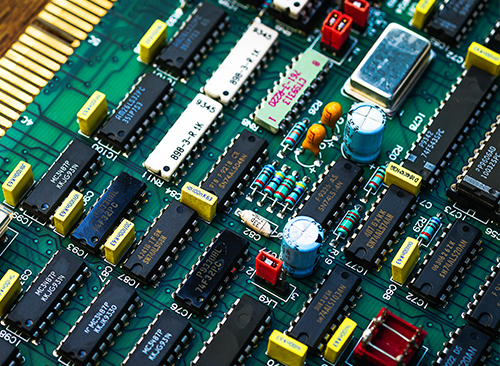Electronics Manufacturing Dehumidifiers

Electronics
In the world of electronics manufacturing, ensuring the quality and reliability of the products is paramount. One of the significant challenges faced in the production of electronics, especially in an Electronics Plant, is the detrimental impact of moisture. Moisture can wreak havoc at various production stages, leading to losses and problems that affect the final product's functionality and durability. This content will delve into the significance of moisture control in the production of electronics, focusing on the application of desiccant dehumidifiers. Our aim is to provide essential information to the owners and maintenance personnel of Electronics Plants who are concerned about moisture-related issues and want to understand the benefits of moisture control.
Understanding the Problem
Moisture Issues in Electronics Production:
• The Electronics Plant is a dynamic environment where various components are assembled to create intricate electronic devices. However, moisture can infiltrate the plant through various means, including humidity in the air, water ingress, and even the natural moisture content of raw materials.
• Moisture can lead to several problems, such as corrosion of sensitive electronic components, short circuits, and reduced product lifespan.
Production Steps Prone to Moisture Issues:• Surface Mount Technology (SMT) assembly, where moisture-sensitive components are mounted on PCBs.
• PCB cleaning and soldering stages, where water-based cleaning agents and soldering processes introduce moisture.
• Storage and transportation of electronic components and finished products.
Benefits of Controlling Moisture with Desiccant Dehumidifiers
Desiccant Dehumidifiers: What Are They?
• Desiccant dehumidifiers are devices designed to regulate humidity by removing moisture from the air. They use a desiccant material, typically silica gel, to absorb water vapor.
How Desiccant Dehumidifiers Work:• These dehumidifiers draw in moist air.
• The air passes over a desiccant wheel or material, which absorbs the moisture.
• Dry air is released into the production environment.
Key Benefits:• Prevention of moisture-related component damage, ensuring product reliability.
• Reduction of defects in PCBs due to soldering issues.
• Extended lifespan of electronic components.
• Enhanced production efficiency with reduced downtimes.
• Compliance with industry standards for moisture control.
Choosing the Right Desiccant Dehumidifier
Dehumidification Capacity: Ensure the dehumidifier can handle the specific moisture load in your Electronics Plant.
Size and Portability: Choose a unit that fits your space and can be moved as needed.
Energy Efficiency: Opt for energy-efficient models to reduce operating costs.
Control Options: Look for units with precise humidity control features.
Maintenance Requirements: Consider ease of maintenance and servicing.
FAQs on Moisture Control in Electronics Production

Q1.What are the primary sources of moisture in an Electronics Plant?
Q2.How does moisture affect the quality of electronic components?
Q3.Can't we rely on air conditioning to control humidity in the plant?
Q4.Are desiccant dehumidifiers cost-effective in the long run?
Q5.What is the optimal humidity level for electronics production?
Some of our valuable clients
Initiate a Connection with Us
We Await Your Interaction
Kindly complete the form below, our team will promptly reach out to you.
Copyright © Rehoboth Enviro Systems. All Rights Reserved.


























